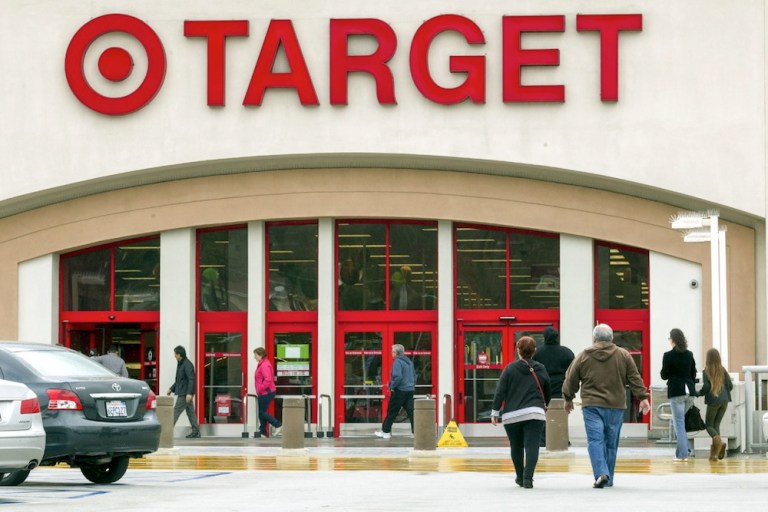
Model and social media celebrity Chrissy Teigen is, in many ways, the perfect brand partner for Target, as evidenced by her recent review of her new kitchen and cookware lines. Unlike her competitor for the title of Generations X’s Martha Stewart, Gwyneth Paltrow, Teigen has built a brand around being accessibly aspirational. Teigen is a natural fit for Target because the brand is known for being the all-purpose homegoods store that’s a bit more fun and a bit more stylish than its big box counterparts.
They call it it Targét for a reason — its offerings are slightly more glamorous, but it remains in a middle class price range, and partnerships with the likes of Teigen are are not uncommon. Marimekko, Hunter and Lilly Pulitzer have all had exclusive Target lines in the last few years. Chip and Joanna Gaines of Fixer Upper sell their homeware line exclusive at Target (and their Texas boutique shop, of course). Target may never be a luxury destination, but it does have a reputation for taste that tends to attract the tasteful.
That’s a blessing in some regards, but has become a challenge in recent years. Target’s demographic is migrating online — and toward Amazon.
Target’s shopper base is 60 – 63 percent female, on average. It is also the slightly younger and more affluent than average; 58 – 62 percent of Target’s shoppers are between the age of 18 and 44 and they earn around $12,000 more a year more than their counterparts shopping at Walmart.
Target also tends to do well with customers who make over $100,000 a year, with 25 percent of its shoppers reporting that level of income. They are increasingly seeing the upper-end of their prime demographic, a group PYMNTS titled bridge millennials. Looking at the data, a significant minority of bridge millennials report Amazon as their preferred shopping destination (19 percent), while a full a 50 percent noted that their preferred commerce experiences are omnichannel.
About half of all shoppers in general say that the majority of their spending was done exclusively at a physical store. Grocery, which has the strongest amount of physical-only shoppers, had 41 percent saying they only shop in store, which means 59 percent are mixing digital and physical shopping channels when buying grocery products.
Target’s ability to differentiate its physical stores still matters — hence the high profile partnerships with Teigen this fall Dwell last year and the massive series of capital upgrades the brand has made over the last 18 months.
Less publicly — though equally urgent — Target has moved to upgrade is omnicommerce and delivery offerings, particularly around grocers. In the last four weeks alone, Target has expanded grocery delivery to California, Montana, New York, Pennsylvania and Maine.
The service is a direct challenge to Amazon’s quickly growing Prime Now delivery service and comes at a slightly lower price point. Shipt, which runs Target’s grocery delivery, costs $14 a month or $99 per year — Prime Membership is $12.99 per month but $119 per year (and comes included with the entire package of Prime Membership benefits).
Shipt is currently available in 35 states, but Target says it expects to expand to all major markets by the end of 2018, reaching about 75 percent of the U.S. population.
Target is also expecting big things from this holiday season, particularly via digital channels. It announced last week that it will double the number of seasonal roles dedicated to fulfilling online orders during the holidays ahead of what is expected to be a spike in pick-up services.
Some are predicting that Target could be hit with worker shortages during the holiday season, given low unemployment rates.
“I think retailers will have to scramble and get creative around staffing,” Retail Metrics founder Ken Perkins told CNBC. “Maybe they have to consider allowing for overtime, which would hurt SG&A. … When you’re looking for workers out in rural areas, how do you get people there?”
Target aims to add 7,500 workers in fulfillment and distribution centers across the U.S. to help pick up and load packages on and off of trucks.
The in-store focus this year will fall heavily on toys, as Toys R Us is officially out of the game for the first time in 2018.
“We are investing in categories like toy and baby, where we know we have this big opportunity ahead of us,” Target CEO Brian Cornell told CNBC after the company reported its earnings last month. “We are going to make sure we are taking more than our fair share of that market.”
Or, at least, they will try. A lot of players are looking to fill the hole left behind by Toys R Us, but Target is hoping that with its classy and charming reputation, and with its backend much more suited to modern retail, it might just have a shot at the market.